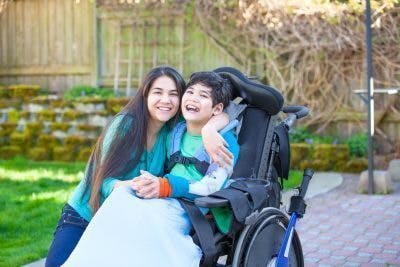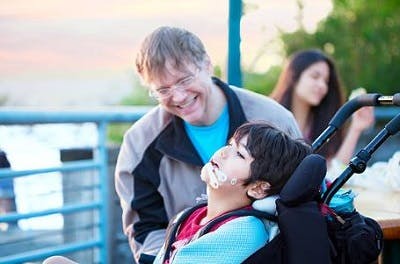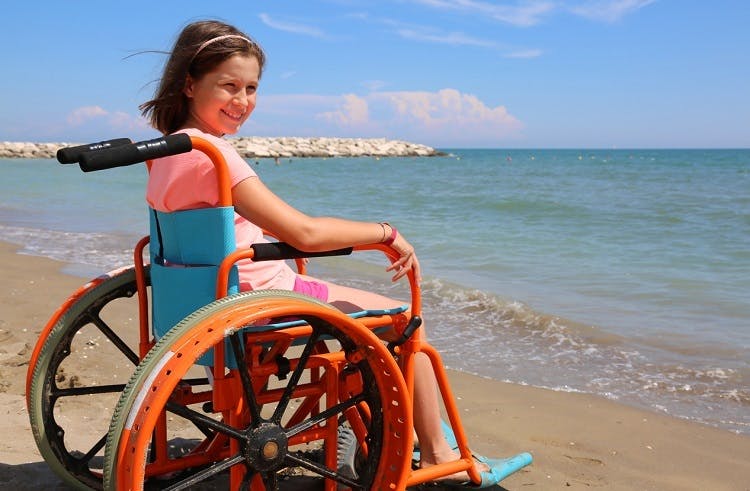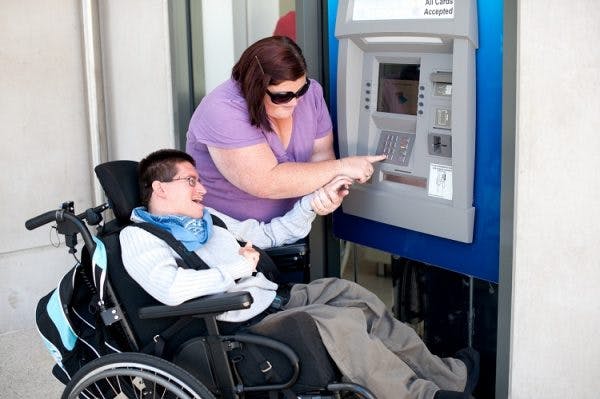Many children with cerebral palsy experience problems with body temperature regulation. Changes in the weather, limited mobility, and brain damage can result in irregular thermoregulation.
In this article, we’ll go over how cerebral palsy affects body temperature regulation and share some tips for cooling down or warming up.
Factors That Can Affect Body Temperature Regulation in Cerebral Palsy Patients
While anyone can be affected by extreme temperatures, individuals with cerebral palsy are more likely to experience negative symptoms due to limitations in movement and communication.
In this study of 374 children with cerebral palsy, 30% of parents reported that their child had body temperature regulation problems.
Let’s go over a few factors that may be responsible for poor body temperature regulation in cerebral palsy patients:
Autonomic Dysfunction
The autonomic nervous system regulates involuntary functions like body temperature, blood pressure, heart rate, and digestion.
Cerebral palsy is caused by damage to the brain before or during birth, or in early childhood.
The severity of one’s cerebral palsy is correlated to the amount of brain damage they have. Therefore, those with more severe CP have greater brain damage.
If the hypothalamus (the region of the brain responsible for regulating the autonomic nervous system) is damaged, an individual with cerebral palsy may experience autonomic dysfunction and have poor body temperature regulation.
Limited Mobility

Movement is important for body temperature regulation. Movement increases blood circulation, as muscles generally require oxygen carried by the bloodstream to create energy to move. Muscle contractions also stimulate the return of blood to the heart.
Areas of the body that aren’t being moved will therefore have reduced circulation. Since warm blood is not circulating as well through areas that are not moving, these areas get colder.
In addition, when muscles contract, they produce heat. When muscles have limited mobility, they are unable to produce as much heat to help with temperature regulation. This explains why children with cerebral palsy who cannot walk often have lower temperatures in their hands and feet than those who can walk.
Furthermore, because individuals with cerebral palsy have limited mobility and may not be able to generate as much heat from muscle contractions, they get cold more easily.
Cerebral palsy patients are also more likely to overheat and fatigue quicker because their bodies have to work harder and use up to 3 times more energy to move.
Want 19 pages of CP recovery tips in PDF form? Click here to download our free illustrated ebook now (link opens a pop up for uninterrupted reading)
Weather
When you have difficulties regulating body temperature, it’s essential to be mindful of the weather.
The bodies of individuals with cerebral palsy are much more vulnerable to extreme outside temperatures.
Cold weather can cause the muscles to tense up and increase involuntary movements.
Hot weather may help relax tight muscles, but it can also make it a lot easier for individuals with CP to get overheated and dehydrated.
Signs of Poor Body Temperature Regulation

Unlike people without mobility limitations, someone with cerebral palsy may not be able to independently leave a room, put on or take off a layer of clothing, or get a glass of water. They also may not be able to wiggle their toes or rub their hands together to warm up their feet or hands.
Additionally, individuals who have difficulties communicating due to cerebral palsy may not be able to ask for the heat to be turned up or a fan to be turned on.
Since individuals with cerebral palsy may not be able to independently thermoregulate, caregivers should keep a close eye out for signs of being too hot or too cold.
Signs of hypothermia (being too cold) include:
- Shivering
- Fatigue
- Delayed breathing and speech
- Confusion
- Clumsiness
- Slow heart rate
Signs of hyperthermia (overheating) include:
- Fever
- Sweating
- Dizziness
- Increased thirst
- Fatigue
- Headache
- Poor concentration
- Reduced coordination
- Irritability
- Increased heart rate
Managing Poor Body Temperature Regulation in Cerebral Palsy

While poor body temperature regulation can’t be cured, individuals with cerebral palsy can improve their quality of life by being prepared.
Understanding what to do when you’re overheating or are too cold is crucial. Here are some tips for combating extreme temperatures:
Tips for Cooling Down:
- Carry a spray bottle or damp towel
- Wear easy-to-remove layers and light-colored clothing
- Stay hydrated and drink lots of water
Tips for Warming Up:
- Always travel with layers (sweaters, jackets,
blankets) - Eat or drink something warm
- Take a warm bath
Cerebral Palsy and Body Temperature Regulation
Problems with body temperature regulation are common in cerebral palsy patients, so it’s important to be prepared.
Not all individuals with cerebral palsy will have neurologically impaired thermoregulation, but they will be more vulnerable to feeling cold or overheating because of their motor impairments.
That’s a wrap! Hopefully, this article helped you understand why your loved one with cerebral palsy feels hot or cold so easily.










